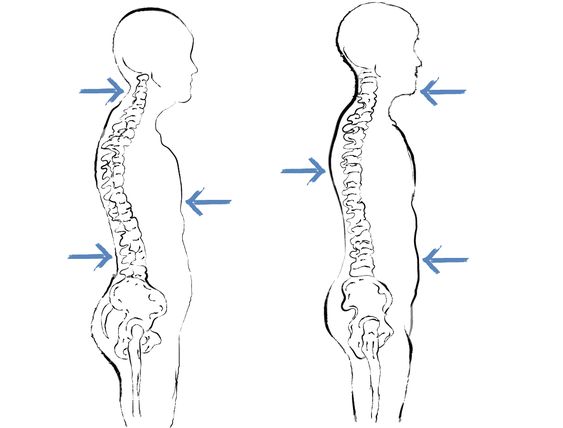How to improve Spine health review 2023
Enhancing spine health is pivotal for maintaining overall well-being, encompassing the optimal state of the spine’s bones, muscles, ligaments, and nerves. The spine’s vitality lies in its capacity to bear the body’s weight, enable movement, and safeguard the spinal cord.
Spine health, a critical facet of our physical wellness, denotes the proper functionality and overall condition of the spinal column. This intricate structure not only provides essential support for the body but also ensures the protection of the spinal cord while facilitating fluid movement.
A healthy spine is the cornerstone of good posture, mobility, and holistic physical health.
The importance of spine health cannot be understated, as it directly impacts our ability to engage in daily activities, maintain proper posture, and experience pain-free movement. To delve into the intricacies of spine health, it is crucial to comprehend the factors that contribute to its well-being in order to improve Spine health in August 2023.
Structure and Function
The spine stands out as a remarkable and intricate structure comprised of 33 individual bones, aptly named vertebrae. These vertebrae are artfully arranged in a stack, interconnected by ligaments and muscles, forming the backbone of our body’s architecture.
This intricately designed spinal column is partitioned into five distinct sections, each with its own unique characteristics and roles, contributing to the spine’s exceptional functionality.
Cervical spine
The Cervical Spine: An Essential Nexus of Support and Functionality The cervical spine, often referred to as the neck region of the spine, is a pivotal segment composed of seven vertebrae, elegantly designated as C1 to C7.
Nestled between the base of the skull and the upper back’s thoracic spine, the cervical spine holds a strategic position, serving as a crucial link between the head and the rest of the body. Its multifaceted roles encompass providing structural support for the head’s weight, facilitating head movements, safeguarding the spinal cord, and orchestrating the intricate network of nerves that connect the brain to every corner of the body.
Integral to the cervical spine’s composition are nerve roots that radiate from the spinal cord and make their exit through minuscule openings known as neural foramina. These nerves assume the critical task of bestowing sensation and overseeing motion in the neck, shoulders, arms, and upper torso.
Beyond its role as a conduit for mobility, the cervical spine assumes a guardianship role for the spinal cord, a linchpin of the central nervous system. Encased within the vertebra’s central canal, the spinal cord finds shelter in the cervical spine.
Yet, the cervical spine, though resilient, can be susceptible to an array of conditions and injuries, which underscores the need for attentive care. As a crucial axis of support and communication, maintaining the cervical spine’s health is imperative to sustain overall well-being and ensure unhindered motion.
By fostering an awareness of its significance and taking proactive measures, we can pave the way for a life marked by vitality, comfort, and uninhibited movement.
Neck Pain
Neck pain can manifest through a range of causative factors, encompassing muscle strain, ligament sprains, poor posture, degenerative alterations, herniated discs, or underlying medical conditions.
Cervical Disc Herniation
specific contributor to neck pain, unfolds when the outer layer of a disc in the cervical spine undergoes rupture. This event propels the inner material to exert pressure on adjacent nerves, thereby triggering a cascade of discomfort that may encompass pain, muscular weakness, or sensory numbness.
Such sensations often radiate through the intricate network of the neck, shoulders, and arms, painting a vivid picture of the intricate connections within the cervical region.
Cervical Radiculopathy
Pain, numbness, tingling, or weakness throughout the shoulders, arms, or hands may occur from nerve root compression in the cervical spine.
Cervical Spinal Stenos
Compression of the spinal canal in the neck can compress the spinal cord and nerves, resulting in neck pain, paralysis, and balance problems.
Treatment and Management: Spine health review 2023 is a comprehensive program designed to improve spinal health, including the cervical spine. It focuses on restoring mobility, flexibility, and strength to promote overall spine wellness. Here’s a deeper explanation of how Unlock Your Spine can help improve your cervical spine.
The program begins with an assessment to understand your current spinal condition, including the cervical spine. You’ll learn about the common issues affecting the cervical spine, such as poor posture, muscle imbalances, and limited mobility.

This knowledge helps you identify areas that need improvement and sets the foundation for targeted exercises and techniques Unlock Your Spine emphasizes the correction of poor posture, which is a common contributor to cervical spine problems.
You’ll learn proper alignment techniques and exercises to improve posture, specifically focusing on the neck and upper back regions. By aligning your spine correctly, you can reduce strain on the cervical spine and promote optimal functioning.
The program integrates specialized cervical spine mobilization exercises that enhance range of motion, increase flexibility, and reduce stiffness. Gentle, controlled movements release restrictions, improving mobility and reducing discomfort.
Strengthening exercises target muscles supporting the cervical spine, enhancing stability and alignment, and addressing muscle imbalances linked to spine issues.
The program includes stretching exercises and relaxation techniques to alleviate tension and encourage relaxation in the cervical spine. Stretching the muscles around the neck and shoulders enhances flexibility, relieves tightness, and boosts overall comfort.
Incorporating relaxation methods like deep breathing and mindfulness exercises can effectively reduce stress and tension in the neck region. “Unlock Your Spine” underscores the significance of adopting healthy habits and making lifestyle changes to enhance cervical spine health.
This may include recommendations on ergonomic adjustments in your workspace, proper lifting techniques, maintaining a healthy weight, and incorporating regular movement and exercise into your routine.
Improving your cervical spine using Unlock Your Spine requires dedication, consistency, and adherence to the recommended exercises and techniques. By committing to the program, you can experience improved mobility, reduced pain, and enhanced overall cervical spine health.
Thoracic spine
The thoracic spine, also known as the upper back or middle back region of the spine, lies between the cervical spine (neck) and the lumbar spine (lower back). It encompasses twelve vertebrae labeled T1 to T12 and is crucial for stability.
These vertebrae, larger and more rigid than cervical and lumbar vertebrae, possess a distinct structure that supports the rib cage. The thoracic spine’s primary role is to provide a stable foundation for the upper body.
While protecting a part of the spinal cord, a vital component of the central nervous system, the thoracic spine facilitates nerve signal transmission between the brain and body, enabling motor function and sensory perception. Its unique structure shelters the spinal cord in a bony canal.
The thoracic spine’s distinctive structure and connection to the ribs reinforce rib cage stability. This connection enables the rib cage to expand and contract during breathing, safeguarding chest organs and facilitating proper respiratory function.
While less mobile than the cervical and lumbar spines due to the rib cage, the thoracic spine still permits some rotational and flexion/extension movements, contributing to overall spinal flexibility and functionality.
Various conditions and injuries can affect the thoracic spine, including thoracic Back Pain Muscle strain, poor posture, spinal misalignments, degenerative changes, herniated discs, or underlying medical conditions can lead to upper back pain.
Kyphosis: Kyphosis refers to an excessive forward curvature of the thoracic spine, leading to a rounded upper back or “hunchback” appearance. It can cause discomfort, postural changes, and potential complications in severe cases.
Scoliosis: Scoliosis involves an abnormal sideways curvature of the spine, which can affect the thoracic region. Depending on its severity, scoliosis can cause postural abnormalities, spinal imbalances, and potential complications.
Unlock Your Spine
The thoracic spine, also known as the upper back or middle back region of the spine, lies between the cervical spine (neck) and the lumbar spine (lower back). It encompasses twelve vertebrae labeled T1 to T12 and is crucial for stability.
These vertebrae, larger and more rigid than cervical and lumbar vertebrae, possess a distinct structure that supports the rib cage. The thoracic spine’s primary role is to provide a stable foundation for the upper body.
While protecting a part of the spinal cord, a vital component of the central nervous system, the thoracic spine facilitates nerve signal transmission between the brain and body, enabling motor function and sensory perception. Its unique structure shelters the spinal cord in a bony canal.
The thoracic spine’s distinctive structure and connection to the ribs reinforce rib cage stability. This connection enables the rib cage to expand and contract during breathing, safeguarding chest organs and facilitating proper respiratory function.
While less mobile than the cervical and lumbar spine due to the rib cage, the thoracic spine still permits some rotational and flexion/extension movements, contributing to overall spinal flexibility and functionality various conditions and injuries can affect the thoracic spine, including
Thoracic Back Pain: Muscle strain, poor posture, spinal misalignments, degenerative changes, herniated discs, or underlying medical conditions can lead to upper back pain.
Lumbar spine
The lumbar spine (lower back) comprises five vertebrae (L1 to L5). It supports the upper body, offers flexibility, and enables various movements. Its large size bears weight and allows bending, twisting, and sideways motion.
It handles impacts, cushions intervertebral discs, and houses the lower spinal cord. Core muscles provide support. Common conditions are low back pain, herniated discs, and spinal stenosis. To maintain a healthy lumbar spine, focus on posture, core exercises, and proper body mechanics.
Unlock Your Spine
a comprehensive program designed to improve spinal health, including the lumbar spine. While it is important to consult with a healthcare professional for a specific diagnosis and personalized treatment plan, Unlock Your Spine can complement your overall approach to managing lumbar spine issues.
Here are some ways Unlock Your Spine can help treat the lumbar spine:
Lifestyle Modifications:
The program emphasizes adopting healthy habits and making lifestyle modifications to support lumbar spine health. This may include recommendations on maintaining a balanced exercise routine, incorporating regular movement breaks, practicing proper body mechanics during activities, and managing stress levels. These modifications can reduce strain on the lumbar spine and promote overall spinal well-being.
Flexibility and Stretching: Unlock Your Spine incorporates various stretching exercises to improve flexibility in the muscles surrounding the lumbar spine. By stretching these muscles, you can reduce tension, increase mobility, and promote better spinal alignment. Flexibility exercises can help alleviate stiffness and discomfort in the lumbar region.
Core Strengthening: The program includes specific exercises to strengthen the core muscles, including those supporting the lumbar spine. Strengthening the core muscles provides stability and support to the lumbar region, reducing the risk of injuries and promoting better posture. Strong core muscles can help alleviate strain on the lumbar spine and improve overall spinal health.
Spinal Mobilization: Unlock Your Spine incorporates exercises and techniques to mobilize the spine, including the lumbar region. These exercises aim to increase flexibility, restore the natural range of motion, and reduce stiffness in the lower back. By performing targeted stretches and movements, you can promote mobility in the lumbar spine and alleviate tightness.
Posture Correction: The program emphasizes aligning your posture to reduce strain on the lower back. Learn techniques and exercises for proper alignment to alleviate discomfort and promote better spinal health.
The program targets various spine conditions like sprains, sciatica, disc issues, spondylolysis, and spinal stenosis. Through stretching, mobilization, and strengthening exercises, it aims to alleviate tightness, reduce strain, and enhance flexibility for improved spinal health.

